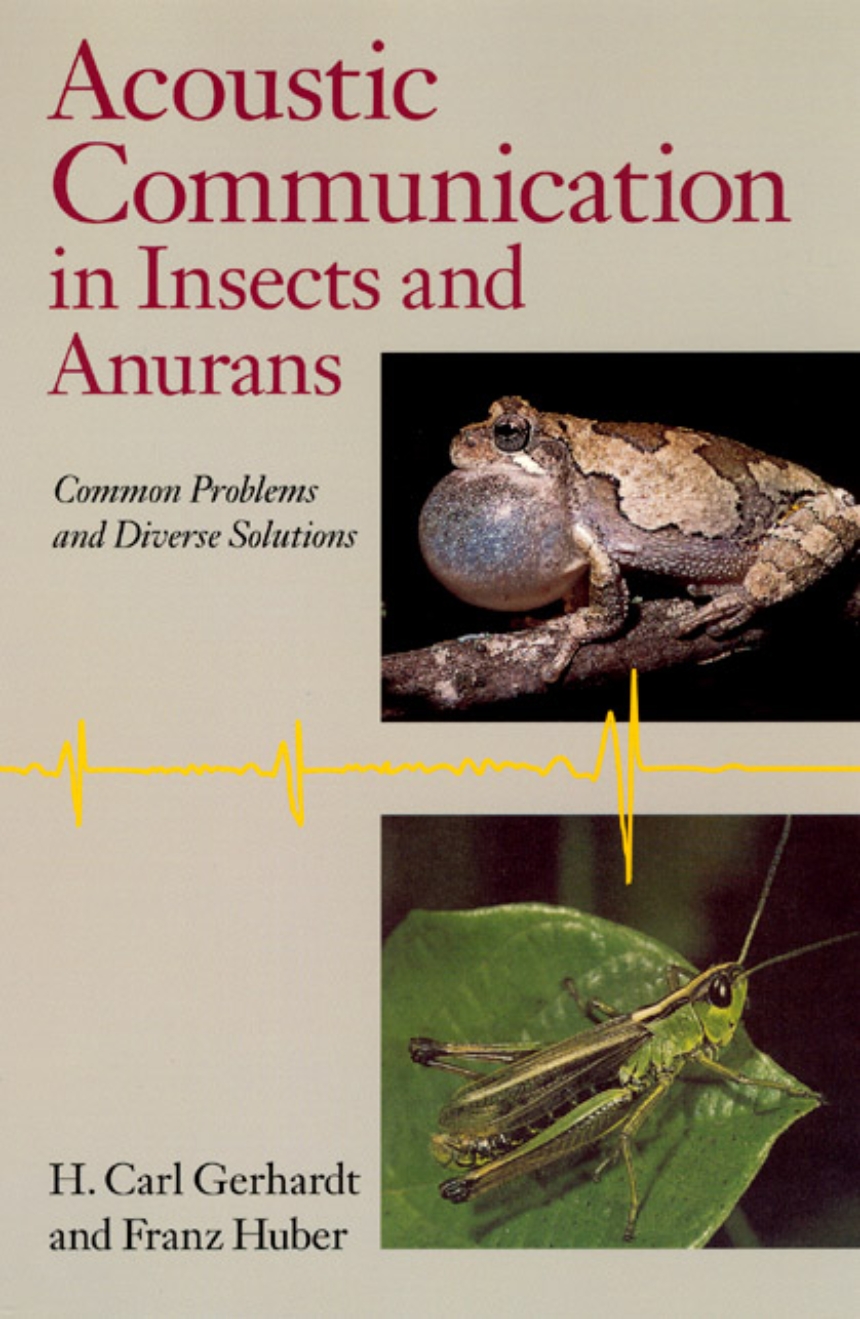Acoustic Communication in Insects and Anurans
Common Problems and Diverse Solutions
9780226288338
9780226288321
Acoustic Communication in Insects and Anurans
Common Problems and Diverse Solutions
Walk near woods or water on any spring or summer night and you will hear a bewildering (and sometimes deafening) chorus of frog, toad, and insect calls. How are these calls produced? What messages are encoded within the sounds, and how do their intended recipients receive and decode these signals? How does acoustic communication affect and reflect behavioral and evolutionary factors such as sexual selection and predator avoidance?
H. Carl Gerhardt and Franz Huber address these questions among many others, drawing on research from bioacoustics, behavior, neurobiology, and evolutionary biology to present the first integrated approach to the study of acoustic communication in insects and anurans. They highlight both the common solutions that these very different groups have evolved to shared challenges, such as small size, ectothermy (cold-bloodedness), and noisy environments, as well as the divergences that reflect the many differences in evolutionary history between the groups. Throughout the book Gerhardt and Huber also provide helpful suggestions for future research.
H. Carl Gerhardt and Franz Huber address these questions among many others, drawing on research from bioacoustics, behavior, neurobiology, and evolutionary biology to present the first integrated approach to the study of acoustic communication in insects and anurans. They highlight both the common solutions that these very different groups have evolved to shared challenges, such as small size, ectothermy (cold-bloodedness), and noisy environments, as well as the divergences that reflect the many differences in evolutionary history between the groups. Throughout the book Gerhardt and Huber also provide helpful suggestions for future research.
542 pages | 5 halftones, 200 line drawings, 6 tables | 6 x 9 | © 2002
Biological Sciences: Behavioral Biology, Evolutionary Biology, Physiology, Biomechanics, and Morphology
Reviews
Table of Contents
Preface
1.Introduction
2.Acoustic Signals: Description and Peripheral Mechanisms
3.Neaural Control of Sound Production
4.Acoustic Criteria for Signal Recognition and Preferences
5.Processing of Biologically Significant Acoustic Signals in
the Auditory Periphery
6.Processing of Biologically Significant Sound Signals in
Central Auditory Systems
7.Sound Localization
8.Causes and Consequences of Chorusing
9.Acoustic Competition and Alternative Tactics
10.Female Choice Based on Acoustic Signals
11.Broad-Scale Patterns of Evolution
Appendices
Literature Cited
Index
1.Introduction
2.Acoustic Signals: Description and Peripheral Mechanisms
3.Neaural Control of Sound Production
4.Acoustic Criteria for Signal Recognition and Preferences
5.Processing of Biologically Significant Acoustic Signals in
the Auditory Periphery
6.Processing of Biologically Significant Sound Signals in
Central Auditory Systems
7.Sound Localization
8.Causes and Consequences of Chorusing
9.Acoustic Competition and Alternative Tactics
10.Female Choice Based on Acoustic Signals
11.Broad-Scale Patterns of Evolution
Appendices
Literature Cited
Index
